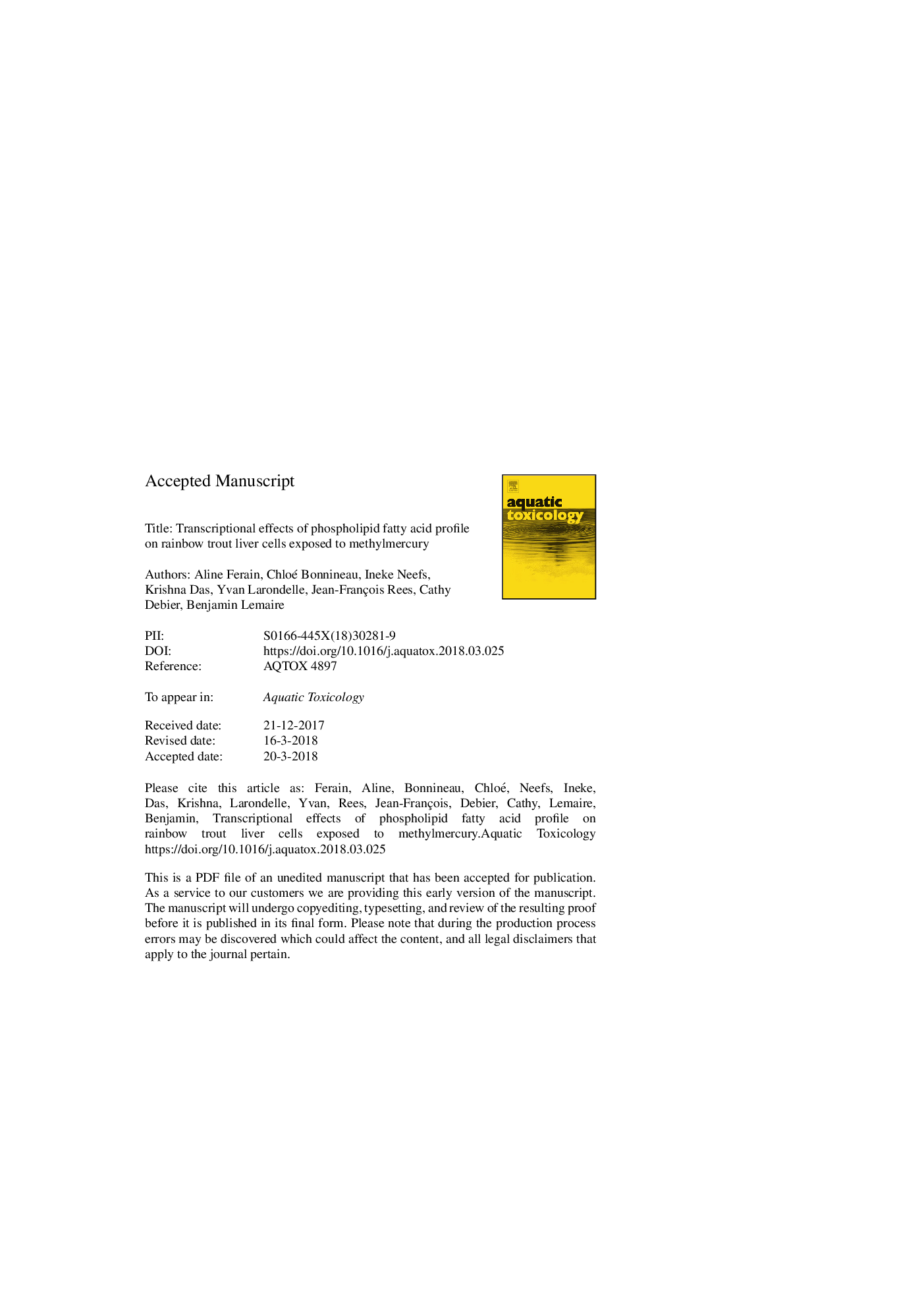| Article ID | Journal | Published Year | Pages | File Type |
|---|---|---|---|---|
| 8883748 | Aquatic Toxicology | 2018 | 30 Pages |
Abstract
Lipids, and their constitutive fatty acids, are key nutrients for fish health as they provide energy, maintain cell structure, are precursors of signalling molecules and act as nuclear receptor ligands. These specific roles may be of crucial importance in a context of exposure to pollutants. We recently showed that the fatty acid profile of rainbow trout liver cell phospholipids modulates sensitivity to an acute methylmercury challenge. In order to investigate mechanisms of effects, we herein tested whether specific polyunsaturated fatty acids (PUFAs) may protect cells from methylmercury through decreasing intracellular mercury accumulation and/or enhancing cellular defences (e.g. via modulation of gene expression patterns). We also investigated the inverse relationship and assessed the impact of methylmercury on cellular fatty acid metabolism. To do so, the fatty acid composition of rainbow trout liver cell phospholipids was first modified by incubating them in a medium enriched in a specific PUFA from either the n-3 family (alpha-linolenic acid, ALA; eicosapentaenoic acid, EPA) or the n-6 family (linoleic acid, LA; arachidonic acid, AA). Cells were then exposed to methylmercury (0.15 or 0.50â¯Î¼M) for 24â¯h and sampled thereafter for assessing phospholipid fatty acid profile, intracellular total mercury burden, and expression pattern of genes involved in fatty acid metabolism, synthesis of PUFA-derived signalling molecules and stress response. We observed that cells incorporated the given PUFA and some biotransformation products in their phospholipids. Methylmercury had few impacts on this cellular phospholipid composition. None of the PUFA enrichments affected the cellular mercury burden, suggesting that the previously observed cytoprotection conferred by ALA and EPA was not linked to a global decrease in cellular accumulation of mercury. Fatty acid enrichments and methylmercury exposure both modulated gene expression patterns. Genes involved in the synthesis of PUFA-derived signalling molecules, in stress response and the orphan cytochrome P450 20A1 were identified as possible sites of interaction between fatty acids and methylmercury in rainbow trout liver cells.
Related Topics
Life Sciences
Agricultural and Biological Sciences
Aquatic Science
Authors
Aline Ferain, Chloé Bonnineau, Ineke Neefs, Krishna Das, Yvan Larondelle, Jean-François Rees, Cathy Debier, Benjamin Lemaire,
